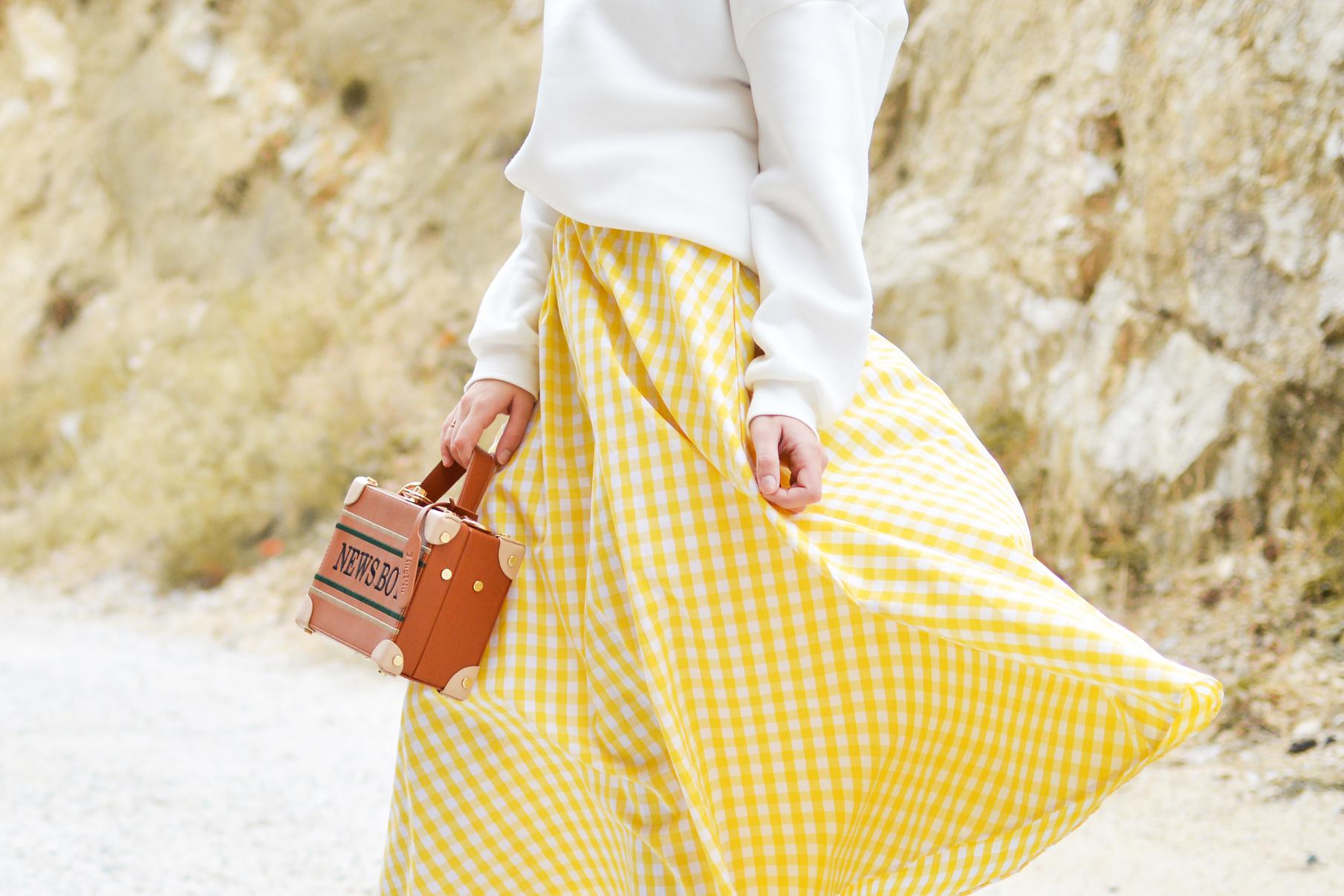In recent years, there have been significant shifts in the way fashion is approached and consumed. One category that is undergoing a metamorphosis is children’s fashion.
The future of children’s fashion is the focus of discussion in the fashion industry. The industry has been witnessing the rise of several trends in recent years, including ethical and sustainable clothing, genderless and inclusive fashion, tech innovations, and more. These changes are redefining the way we think about children’s fashion.
In this blog, we’ll explore the trends that are shaping the future of children’s fashion and how they are likely to impact the industry.
Sustainable Materials in Children’s Fashion
Sustainability has become a hot topic in the fashion industry, and it is essential to consider it when it comes to our children’s clothes. Using sustainable materials in the production of children’s fashion is an excellent way to protect the environment and reduce the carbon footprint.
Eco-friendly fabrics such as organic cotton, bamboo, and recycled polyester are becoming more popular in the children’s fashion industry. These fabrics are not only better for the environment but also better for our children’s health as they are free from harmful chemicals that could cause skin irritations. Ethical fashion brands are now incorporating these sustainable materials in their collections, making it easier for parents to make the right choice.
By opting for sustainable materials in children’s fashion, we can build a better future for our planet and the next generation.

The rise of ecofriendly clothing in the market
As more and more people become aware of the environmental impact of the fashion industry, we have witnessed a significant rise in eco-friendly clothing in the market. This trend is not just limited to adult fashion but has also made its way into children’s fashion. Ethical clothing brands are now producing sustainable and reusable clothing options that are not only good for the environment but also have a more extended lifespan.
With the popularity of sustainable materials for children’s clothing, we can expect to see even more eco-friendly options in the future, making it easier for parents to choose sustainable fashion for their children.
Pros and cons of using sustainable materials in children’s fashion
While eco-friendly clothing certainly has its benefits, there are also some drawbacks to consider. On the positive side, using sustainable materials for children’s clothing reduces the amount of waste that ends up in landfills, reducing the impact on the environment.
Additionally, many sustainable materials like organic cotton or bamboo are naturally hypoallergenic, making them ideal for children with sensitive skin.
However, sustainable materials can be more expensive than their non-sustainable counterparts, making them less accessible to families on a budget. Additionally, sustainable materials may not be as durable as traditional materials, resulting in shorter lifespans for clothing items, which can be frustrating for parents who want to invest in long-lasting clothing for their children.
The future of children’s fashion is eco-friendly and innovative
Given the current trends towards environmental consciousness and sustainability, we can expect to see even greater uptake of eco-friendly materials and processes in children’s fashion. New innovations such as recyclable fabrics and sustainable production methods offer exciting possibilities for the industry.
Brands that prioritize environmental responsibility are likely to stand out with parents who are seeking out more ethical and sustainable options.
While eco-friendly clothing may not yet be the norm in children’s fashion, this trend is undoubtedly here to stay and will continue to shape the industry for years to come.
Future of sustainable materials in children’s fashion
The future of sustainable materials in children’s fashion looks promising. As more people become aware of the environmental impact of clothing production, there is a growing demand for eco-friendly options.
Many designers are already experimenting with new sustainable materials, such as recycled polyester and TENCEL™ Lyocell, to create innovative, eco-friendly clothing for children.
In the coming years, we can expect to see a continued investment in sustainable production and materials as designers and brands work to meet the changing needs and expectations of today’s environmentally conscious consumers.
Ultimately, the future of children’s fashion lies in the hands of consumers who have the power to choose sustainable clothing options that prioritize the well-being of our planet and future generations.
Impact of sustainable materials on the environment and society
The impact of sustainable materials on the environment and society is significant. Traditional clothing production methods generate a great deal of waste, pollution, and resource depletion, whereas sustainable materials and production methods reduce the environmental impact of fashion.
Sustainable materials also have a positive impact on society, as they typically require less water and energy to produce, and often support local communities through their production.
Additionally, sustainable fashion helps to create a culture of conscious consumption, which benefits everyone by reducing waste and promoting responsible use of resources.
By embracing sustainable materials and production processes, children’s fashion can become a force for good, helping to create a healthier world for our children and future generations.
Technology and Children’s Fashion
The world is rapidly advancing technologically, and this has had a profound impact on children’s fashion. Technology has enabled clothing designers to create innovative designs that were once thought impossible. Smart clothing, for example, is gaining widespread popularity in kids’ fashion.
Parents can now buy clothes that monitor their child’s vital signs, temperature, and activity level.
In addition to smart clothing, technology has also made it possible to create clothes that are more durable and can withstand frequent washing without losing their shape or color.
Parents can now purchase clothes that last longer and can be worn over and over again, reducing the need for frequent replacements.
Advancements in technology have also made it possible for designers to create clothes that are more comfortable and functional.
For example, compression clothing that helps with circulation and muscle recovery is becoming popular in children’s fashion.
The future of children’s fashion is undoubtedly tied to technology, and we can expect to see more innovative designs and materials in the years to come.

Wearable technology in children’s clothing
One of the most exciting developments in children’s fashion is the inclusion of wearable technology in clothes. From fitness trackers to smartwatches, these pieces of technology are now being integrated into clothing to make monitoring children’s health and wellbeing much easier for parents.
Wearable technology can also help to educate children about the importance of staying active and healthy, making it a valuable addition to any child’s wardrobe. With new advancements in technology being made all the time, we can expect to see even more innovative uses for wearable technology in children’s fashion in the years to come.
Advancements in 3D printing technology in children’s fashion
Advancements in 3D printing technology have also made their way into children’s fashion. With this technology, clothing designers can create unique and intricate patterns that would be difficult or impossible to produce using traditional manufacturing methods.
Not only does this provide endless design possibilities, but it also allows for personalized clothing tailored to a child’s specific measurements and needs.
3D printed clothing is not only innovative, but it also has the potential to reduce waste and improve sustainability in the fashion industry. As this technology continues to evolve, we can expect to see more creative applications in children’s fashion.
Importance of incorporating technology in children’s fashion
In today’s digital age, it’s crucial to incorporate technology into all aspects of life, including children’s fashion. One example of this is the use of wearable tech, such as smartwatches and fitness trackers, in children’s clothing. These items can help parents monitor their child’s health and activity level, while also providing interactive experiences for children.
Augmented and virtual reality are also being used to enhance the shopping experience for children. With the help of these technologies, children can see how an outfit would look on them before making a purchase, or even try on clothes virtually without stepping into a dressing room.
Overall, incorporating technology in children’s fashion not only adds convenience and excitement but also keeps up with the ever-changing digital world we live in.
Future of technology in children’s fashion
The future of technology in children’s fashion looks to be even more exciting and innovative. Advances in wearable technology are expected to make clothing even more interactive and customizable.
For example, clothing might change color or pattern based on a child’s mood or even have built-in voice assistants to help children with their daily routines.
Moreover, AI and machine learning are predicted to revolutionize the fashion industry, including children’s fashion. With the help of AI, retailers can predict trends and preferences, streamline their supply chains, and even offer personalized recommendations for customers.
As children become more tech-savvy, the demand for tech-integrated clothing will only increase, driving further innovations in the field. The future of children’s fashion is not just about looking good but also feeling good and being connected with the world around them.
GenderNeutral Clothing for Children
Another significant trend in the future of children’s fashion is the rise of gender-neutral clothing. More and more parents are rejecting traditional gender norms and seeking clothing that is not limited to pink for girls and blue for boys.
Brands are recognizing this demand and offering clothing lines that prioritize comfort and individual expression over gender stereotypes.
Gender-neutral clothing not only empowers children to express themselves but also promotes inclusivity and diversity in the fashion industry.
This trend is expected to continue as parents push for more options that allow their children to express their unique personalities without being confined to outdated gender norms.
Sustainability in Children’s Fashion
Sustainability is a concept that is gaining traction across all industries, including children’s fashion. Parents are becoming increasingly aware of the impact of fast fashion on the environment and are seeking eco-friendly alternatives for their children’s clothing.
Brands are responding to this demand by offering more sustainable clothing options, such as organic cotton, recycled materials, and biodegradable fabrics.
Not only does sustainable clothing benefit the planet, but it also promotes ethical and fair production practices. This trend is expected to grow as more consumers prioritize ethical and sustainable fashion practices.
Overall, the future of children’s fashion is exciting and full of promise. With innovative technology, gender-neutral clothing, and sustainable practices, the industry is evolving to meet the needs and values of modern parents and their children.

The emergence of genderneutral fashion in the industry
With the rise of gender-neutral clothing in the children’s fashion industry, parents and brands alike are embracing a new wave of inclusivity and individual expression. Gone are the days of limiting children’s clothing choices based on their gender. Rather, parents are now seeking comfortable and stylish options that allow their children to showcase their unique personalities without conforming to outdated gender norms.
This trend not only empowers children but also promotes diversity and inclusivity within the fashion industry. As demand for gender-neutral clothing continues to grow, the future of children’s fashion is looking more inclusive and empowering than ever before.
The impact of genderneutral clothing on children’s development
The impact of gender-neutral clothing extends beyond just fashion trends and styles. It can have a significant impact on children’s development as they grow and mature.
By giving children the freedom to express themselves, they become more confident, assertive, and secure in their identity.
As children are exposed to a diverse range of clothing options, they learn to appreciate and accept differences in others. They understand that it is okay to be different and that everyone deserves to be treated equally, regardless of their gender or sexuality.
Gender-neutral fashion can also be an excellent tool for parents to teach their children about important social issues, such as gender equality and inclusivity, from a young age. By embracing diverse and inclusive fashion choices for their children, parents can create an environment that fosters empathy and understanding for others.
The growth of sustainable fashion in children’s clothing
In recent years, sustainability has become a significant factor in the fashion industry.
With consumers becoming more environmentally conscious, brands are adopting eco-friendly practices, including in children’s fashion.
Sustainable and ethical fashion involves the use of natural and recycled materials, minimizing waste, and reducing the use of harmful chemicals and dyes in production.
As more consumers opt for eco-friendly fashion choices for their children, the industry is shifting towards sustainable and socially responsible practices.
Overall, the future of children’s fashion is evolving towards inclusivity, empowerment, and sustainability. It is an exciting time for parents, children, and brands as the industry embraces positive change.
Challenges and opportunities for genderneutral fashion
Despite its many benefits, gender-neutral fashion still faces challenges, particularly in terms of mainstream acceptance and availability.
Many parents still feel more comfortable choosing traditional gender-specific clothing, while some brands are hesitant to embrace gender-neutral styles and risk alienating their customer base.
However, there are also many opportunities for growth and innovation in the gender-neutral fashion industry.
Brands that prioritize inclusivity and diversity are likely to gain a strong following, especially among younger, socially conscious consumers.
As more parents look for sustainable, socially responsible fashion options for their children, the demand for gender-neutral clothing is likely to continue to grow.
The future of gender-neutral children’s fashion is bright, filled with opportunities to create positive change and empower young people.
The future of genderneutral clothing for children
Gender-neutral clothing has gained immense popularity in recent years, and it seems as though this trend is likely to continue in the future. As society becomes more accepting of individual gender expression, and parents continue to embrace inclusive values, gender-neutral clothing is set to become a mainstream option for children of all ages. Some brands have already taken the plunge and begun creating gender-neutral clothing lines, and these brands are winning accolades for their innovation and forward-thinking initiatives.
As more and more companies embrace gender-neutral fashion, there will be many opportunities to redefine what we mean by “boys’ clothes” and “girls’ clothes”, and create clothing that is comfortable, functional, and stylish for all children. In the years to come, we can expect to see even more gender-neutral options in children’s fashion, from organic cotton basics to fancy dresses and suits.
This shift towards inclusivity and diversity is positive and empowering for children, and helps them to express themselves in ways that feel authentic and true to who they are. The future of gender-neutral children’s fashion is full of possibilities, and it’s an exciting time for anyone interested in fashion, social justice, and equality. As we work to create a more just and inclusive world, we can take inspiration from the leaders in the gender-neutral fashion industry and build a future that is bright, innovative, and sustainable.
Diversity and Inclusion in Children’s Fashion
Along with the rise of gender-neutral clothing, there is also an increasing demand for greater diversity and inclusion in children’s fashion. Parents are calling for clothing that represents a wide range of skin tones, body shapes, and cultural backgrounds, ensuring that children of all backgrounds can feel seen and celebrated.
Thankfully, brands and designers are beginning to listen and respond.
Some companies have launched lines specifically for plus-sized children, while others are creating clothing that reflects the cultural heritage of different communities. As we move forward, we can expect to see even more diversity in children’s clothing, with brands embracing a wide range of body types, skin tones, and identities.
This shift towards greater inclusivity in children’s fashion is an important step towards a more just and equitable world, and it’s encouraging to see so many brands and consumers taking an active role in this movement. With creativity, innovation, and a commitment to social justice, the future of children’s fashion is sure to be bright and exciting.

Increasing representation of diverse cultures in children’s fashion
Diversity and inclusion in children’s fashion are becoming mainstream goals for many brands and designers. In recent years, the demand for clothing featuring diverse cultural backgrounds has been growing in the children’s fashion industry. There is a desire to have clothing that represents different ethnicities and cultures in a positive and respectful manner.
The clothing needs to be both fashionable and culturally appropriate, where children of diverse backgrounds can feel proud of their heritage.
Brands are now offering clothing lines that celebrate cultural diversity, such as traditional African prints, Indian-inspired embroidery, and Chinese calligraphy designs.
The increasing representation of diverse cultures shows promise in the children’s fashion industry. Children of different ethnicities and cultures can now see themselves represented in clothing, which boosts their confidence and strengthens their cultural identity.
The trend isn’t just about tokenism but respecting and celebrating diversity. The more diversity is represented in children’s fashion, the greater the understanding, awareness, and appreciation for differences in people.
It is encouraging to see that the fashion industry is taking steps towards promoting diversity, equity, and inclusion.
Cultural representation in children’s clothing is not only innovative but necessary in promoting cultural competency and respect. This is the direction that the future of children’s fashion should be heading towards.
The importance of inclusivity in children’s clothing
As society becomes more conscious of the importance of inclusivity, the children’s fashion industry should follow suit. Inclusivity is all about embracing differences and making sure every child feels comfortable and confident in their clothing. The industry should strive to be gender-neutral, size-inclusive, and adaptive to children with disabilities.
Many brands are already making inclusivity a priority, creating clothing lines that cater to all kids regardless of their age, body type, gender, and ability. The future of children’s fashion should embrace inclusivity as a non-negotiable value, ensuring that every child feels seen, heard, and valued.
This trend is essential, and we can only hope that all children’s fashion brands move towards an inclusive future.
Cultural appropriation versus appreciation
The fashion industry often finds inspiration from different cultures, and children’s wear is no exception. However, the concern of cultural appropriation versus appreciation has been a topic of debate for a long time.
Appreciation involves understanding and respecting the cultural significance of a specific item and using it respectfully. On the other hand, appropriation is when someone takes something from a culture that is not their own without acknowledging its significance for monetary gain or trend.
The future of children’s fashion lies in understanding the boundaries between appreciation and appropriation.
Brands should do thorough research on the cultural significance of the items they are making and give due credit where necessary.
By bridging the gap between appreciation and appropriation, children’s wear can be a tool for representing diversity, teaching tolerance, and promoting cultural harmony.
Future trends in diversity and inclusion in children’s fashion
In recent years, there has been a growing demand for diversity and inclusivity in children’s fashion. We can expect to see more brands embracing this trend by creating inclusive clothing that caters to children of different races, sizes, and abilities.
Gender-neutral clothing is also becoming more popular, with brands creating collections that challenge traditional gender roles and stereotypes.
In addition, sustainability is another trend that is not going away anytime soon. Parents are becoming more conscious of the environmental impact of the clothing industry, and we can expect to see more eco-friendly and ethical clothing options for children in the future.
The children’s fashion industry has the power to shape the next generation’s mindset and values. By embracing diversity, inclusion, and sustainability, we can create a better and more tolerant world for our children to grow up in.
The future of children’s fashion is increasingly sustainable, gender-neutral, and diverse. With a rising awareness of the impact of fast fashion on the environment, many parents are opting for quality, eco-friendly garments. Designers are also challenging traditional gender stereotypes and expanding their offerings to include a wide range of sizes and styles.
As we look ahead, it is clear that children’s fashion will continue to evolve to reflect the changing values of society.










